Johnson & Johnson For All You Love and Our History of Advertising
This month, Johnson & Johnson launched a new global brand equity campaign called Johnson & Johnson For All You Love. The campaign, which includes television commercials and print advertising, reminds people of the positive impact of caring, and celebrates the ways in which people care for loved ones every day and over the course of a lifetime. Caring is a theme that has grown naturally from what we do, and it’s been a theme of our advertising throughout Johnson & Johnson history.
Caring is a focus that goes back 127 years at Johnson & Johnson. From our start in 1886 as a company founded by the younger brothers of Civil War veterans to make the first mass produced sterile surgical dressings and sterile sutures to help make surgery sterile…to the first commercial First Aid Kits, developed 125 years ago in 1888 to care for injured railroad workers…to BAND-AID® Brand Adhesive Bandages, invented by a Johnson & Johnson employee in 1920 as a way to care for his wife’s small kitchen injuries, to today’s consumer products, pharmaceutical medicines and medical devices -- and through community partners we support across the world -- caring remains a central theme of our history from our founding to today.
As readers of this blog know, caring is not a new theme in Johnson & Johnson advertising either. As we launch our Johnson & Johnson For All You Love campaign, here’s a look back at some of our historical advertising that uses the theme of caring for those you love and for others.
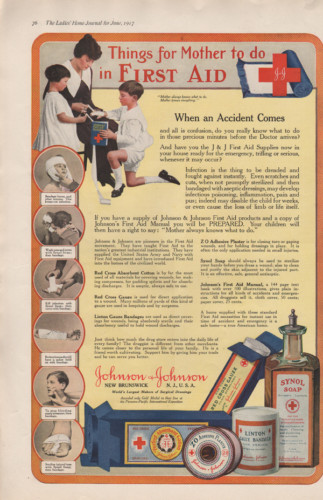
Caring was the theme of our First Aid advertising in the Nineteen Teens, as illustrated by this ad from 1917 that ran in the Ladies’ Home Journal. Called “Things for Mother to do in First Aid,” it showed a mother caring for her young son (who’s holding one of our pioneering Johnson & Johnson First Aid Manuals!) while her daughter looks on. The left side of the ad shows some basic first aid and bandaging techniques.
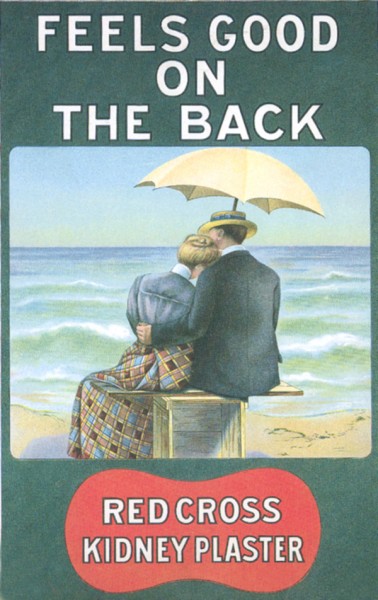
Our “Feels Good on the Back” ad for RED CROSS® Kidney Plasters also illustrated caring – in the pose and body language of the Edwardian era couple pictured in the ad. The tagline of the ad – Feels Good on the Back – refers to the kidney plaster, but it also refers to the comforting arm placed around the back of the woman in the illustration. The ad – with its image of caring -- struck such a chord with the public that it became a part of popular culture and ran unchanged for a remarkable 30 years.
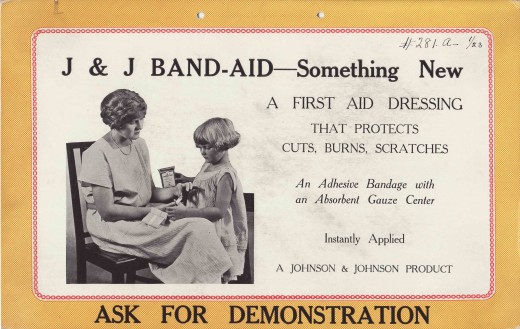
Caring was the theme of a 1923 BAND-AID® Brand Adhesive Bandages ad too. This very early ad (which would have been displayed in a retail pharmacy) shows the product being used by a parent caring for a child, an image that would become a mainstay of the product’s advertising.
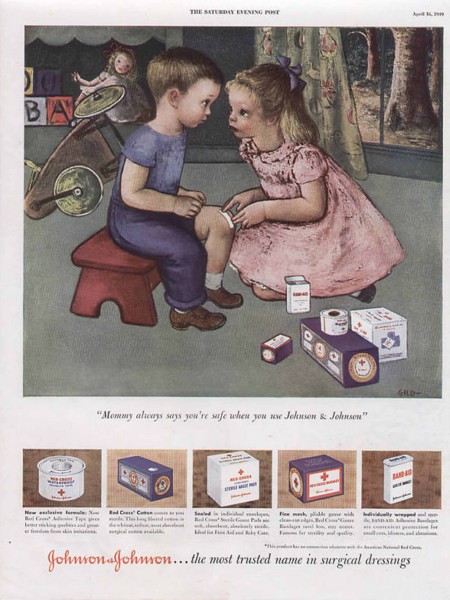
In the late 1940s, Johnson & Johnson commissioned noted artist Gladys Rockmore Davis to do a series of paintings based on caring for an advertising campaign. The ads featured children, and they were tremendously popular, leading Johnson & Johnson to produce reprints of the paintings. It’s said that the Gladys Rockmore Davis ads for Johnson & Johnson were among the earliest instances of a noted artist’s work being used in an advertising campaign. A graduate of the Arts Institute of Chicago and a member of the famed Art Students League of New York, Davis’ paintings can be found in major collections, including those of the Metropolitan Museum of Art in New York…and at Johnson & Johnson.
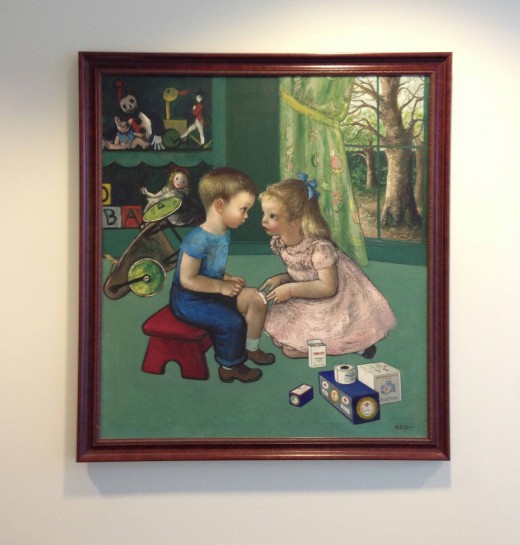
In 2002, in response to a critical shortage of nurses and declining enrollment in nursing schools, Johnson & Johnson launched the Campaign for Nursing’s Future, which was designed to inspire people to consider nursing as a career. The campaign includes television commercials and print ads that showcase real-life nurses – women and men who make caregiving their careers. Since 2002 when the campaign launched, nursing schools have reported a doubling in baccalaureate program enrollment, according to data from the American Association of Colleges of Nursing. Inaugurated before the social media age, the Campaign for Nursing’s Future today is on Facebook, YouTube and Twitter.
One of the most popular of the modern Johnson & Johnson ad campaigns focused around caring is the Having a Baby Changes Everything campaign. These television commercials and print ads feature moms and dads with their babies and young children, and they talk about the positive ways that becoming a parent changes people’s lives. The message of the ads is that Johnson & Johnson understands how profound a change it is to become a parent, and is there to support the bond between parents and children. That message of support harks back to the messages of support for parents and families in the Company’s ads for our baby products, first aid products and public health products a century ago.
More recently, our You’re Doing Okay, Mom television commercial continued that message of support. The ad is narrated by a baby telling his mom what an amazing job she’s doing in caring for him.
With a long history of making products that care for people, it’s only natural that our advertising over the decades has reflected that focus on caring. With the launch of the Johnson & Johnson For All You Love ads, Johnson & Johnson is continuing a tradition that started almost a century ago.

Very cool!! This new campaign, just like our historical ones, seems to really focus on the consumer products and how J&J helps play the 'middleman' role between family members. J&J kind of facilitates the caring. I think it would be interesting (although out of character) to showcase some of our more innovative/life saving devices and drugs that the average consumer doesn't normally hear about.
I copied a picture years ago and did it in charcoal. It is a baby reclining (taken from the top of the head view). I'm sure it was a Johnson & Johnson ad for a baby product but can't seem to find it a nywhere. It shows the baby's head, it's right arm and partial back and diaper. Would love to find the original I copied it from. Any help you can give me would be appreciated.
In reply to by Judy Deel
Hi Judy,
Without seeing a picture of the ad you used as a model for your charcoal sketch, or without seeing a picture of the artwork you did, it would be hard to say. Over the course of its history, Johnson & Johnson and its consumer operating company have produced many ads and prints featuring babies. If you are able to email me a photo of your artwork through the blog's email, I would be happy to take a look and see if it matches any ads in our archives. The blog's email is: [email protected]
Margaret